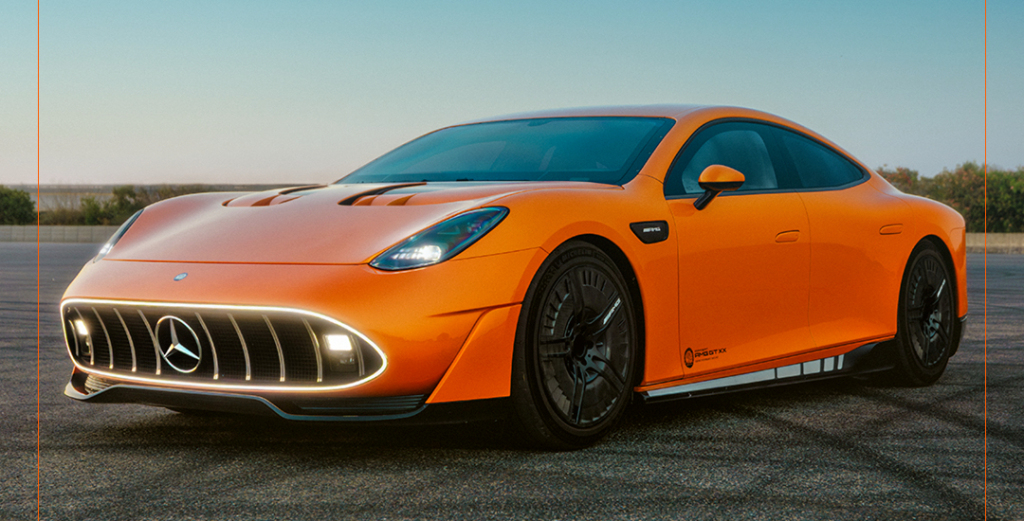
Xiaomi SU7 Ultra, priced at 529,900 yuan, has disrupted the performance car market and made supercar-level performance accessible to the public.
This is the universal value brought about by technological progress, but the controversy caused by a Xiaomi SU7 Ultra owner speeding on a public road late at night shows that if technology lacks a constraint mechanism, it may create more safety hazards.
On the road in the early morning, a performance beast that has recently become popular in the Chinese automotive, digital and other circles is greedily devouring the road ahead. 140, 260, 302... The numbers on the center console jump wildly, just like the running score curve that digital bloggers use AnTuTu to test.

The Xiaomi SU7 Ultra owner's behavior of speeding up to 300km/h on a public road is like an out-of-control carnival enabled by technology. This performance monster with 1548 horsepower and 0-100 acceleration in 1.98 seconds, designed with a top speed of 350km/h, was originally used to conquer the track, but this owner turned it into a mobile bomb on the road.
Even on an empty road late at night, even if there are few vehicles around, the risk of loss of control and sudden road conditions may still cause disasters for the driver and innocent people. This behavior of treating public roads as private racetracks is not just reckless driving, but also an extreme disregard for public safety.
The drag racing incident involving the owner of Xiaomi SU7 Ultra is a microcosm of the cultural conflict that has occurred after some digital gamers crossed over to the automotive field.
Users who lack respect for cars and are accustomed to the culture of benchmarking only simplify cars into hardware products with piled-up parameters. Horsepower values become social currency, and acceleration scores become identity labels, but they selectively forget the physical energy contained in more than two tons of metal moving at a speed of 300km/h - flashing a mobile phone will at most turn it into a brick, but flashing a car costs lives.
At present, in order to compete for the market, car companies use the "fastest mass-produced car on the surface" as a marketing weapon, but have not simultaneously built a safety education system to match it. This business logic of "only selling knives without teaching how to use them" is actually condoning the abuse of technology. In contrast, in traditional supercar culture, manufacturers often cultivate safety and responsibility awareness through activities such as owner training and track days, while emerging technology car companies are prone to fall into the short-sighted trap of "focusing on parameters and neglecting culture" in the initial stage.
Data shows that Xiaomi SU7 Ultra received over 6,900 orders within 10 minutes of its launch, and the number of orders has exceeded 10,000. The huge user base is even more worrying, and the risk index on public roads will be magnified accordingly in the future. When the era of supercar performance is coming, the supporting road safety education and ethics construction must also keep up with the speed of sports cars.
Faced with this predicament, it is time to build a dual line of defense of technology and institutions.
As for car companies, they can learn from DJI’s electronic fence mechanism for drones, limit the maximum speed on public roads through geographic fencing, and only allow the restrictions to be lifted on certified tracks.
At the same time, it is recommended that relevant departments consider formulating a driver capability grading system, binding the extreme speed mode with professional assessment, and setting track training as a prerequisite for car purchase.
In addition, the vehicle system can be used to upload driving data in real time, and dangerous behaviors can be identified and held accountable through algorithms. Xiaomi SU7 Ultra is equipped with high-computing hardware such as laser radar and Orin chips, and has the technical foundation to upgrade safety monitoring from passive recording to active intervention.
What should be done immediately is that car companies should build a car owner culture through community operations and internalize "respect for speed" into a group consensus, rather than relying on legal deterrence.
The Xiaomi SU7 Ultra's drag racing incident is not an isolated case, and the image of this golden beast is everywhere on major social platforms.
When the speed at which technology breaks through the speed limit far exceeds the speed at which human beings upgrade their awareness of road civilization, society will inevitably pay a heavy price. We must be wary of simply blaming the technology itself, such as the stigmatization of electric vehicle performance by some public opinion, and we must also reject the appeasement attitude of "technology is not guilty". Real progress is based on the dual tracks of technological capabilities and social responsibility.


